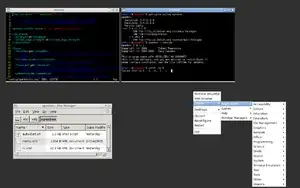Gnome, KDE, Unity, Pantheon
Gnome, KDE, Unity, Pantheon are desktop environments.
A desktop environment consists of a lot of different tools. e.g: login manager, window manager, application launcher, menus, terminal emulator, file manager, web browser, editor, graphical tools for system configuration and a lot of other utilities. It's a complete package of everything you need.
Image from reddit:

GTK and QT
GTK and QT are toolkits/framework to develop software, e.g: a lot of tools developed for Gnome desktop environment are usin GTK to make their GUI, instead of writing everything myself I can uses these to speed up my development and at the same time use and follow a standard framework which all other programs are using in a same environment.

X, X11 and Xorg
X is a framework, we can even reference it as a protocol, X11 is the last version of this protocol and Xorg (Xorg server: X uses a server client structure) is a implementation of x11, it's like HTTP and browsers, HTTP is a protocol, HTTP2 is the last version and web browsers which are using this protocols to talk to web servers somehow implemented it.
From Wikipedia:
X provides the basic framework for a GUI environment: drawing and moving windows on the display device and interacting with a mouse and keyboard.
It simply make us able to draw and show things, also contains a lot of necessary drivers.
However even X needs a window manager to uses it's capabilities, it the bellow picture you see twm window manager and xterm and other stuff running a X session, for more information about window managers read the last section.

startx
startx is a script to bring a graphical environment up, it initialize an X session.
Window Managers
Window managers are mostly part of desktop environment, you can even use them instead of using a complete desktop environment. There are a lot of window managers available things like: i3wm, awesome, openbox, fluxbox, blackbox, xfwm4, compiz, etc.

They control how our windows act, how they look like, what elements they have, where should my title and default buttons show up, what happens if I drag/resize/close it? etc. Window managers uses display servers like X or Wayland to achieve these.
Pictures are from Wikipedia.



